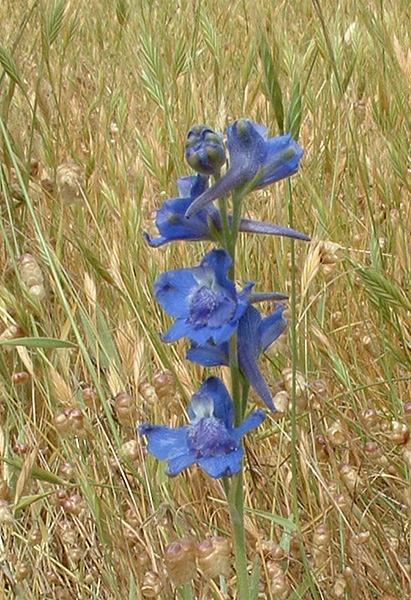|
Mrs. Wright Was Right
by Rosemary Penna U'Ren
This is a photo of a wild larkspur taken in 2003 near the King Mountain trail in Larkspur. The tale has oft been told about the wife of the early developer of Larkspur, Mrs. Wright, and how she chose the name of the town from the little blue wildflowers on the hills. Problem is, later folks came along and only saw the wild lupine growing in the hills, and decided that Mrs. Wright did not know a larkspur from a lupine. However as kids in the 40s 50s and 60s we often saw larkspurs along with lupines and many other wildflowers blooming in the hills in the spring. As you can see, the wild larkspurs still grow in Larkspur.
Unfortunately the myth persists that poor Mrs. Wright didn’t know what she was talking about, and thank goodness the town wasn’t named "Lupine." Mrs. Wright however, was a native of England. The English had been growing our wildflowers from seeds since the early explorers started sending them back to England and Europe in the 1500s. Many a wildflower from the US was grown first in conservatories, and then became available to gardens and parks. Mrs. Wright most likely knew very well what a larkspur looked like, and she correctly named the town "Larkspur." Mrs. Wright was right.
However, gone are the days when the sheer abundance of spring wildflowers would set the hills ablaze with color: orange swaths of poppies, yellow patches of buttercups, blue masses of lupines as well as the sparser and less showy larkspurs.
The photo was identified by Doreen Smith, Rare Plant Chair for the Marin Group of the California Native Plant Society, as “probably” Delphinium hesperium. Doreen was looking at a photo I sent her so could not make a definitive identification. This plant is mentioned in John Thomas Howell’s “Marin Flora” as “rather common in clay soil on dry grassy hills."
Digital photo by Paul Penna
|
|
